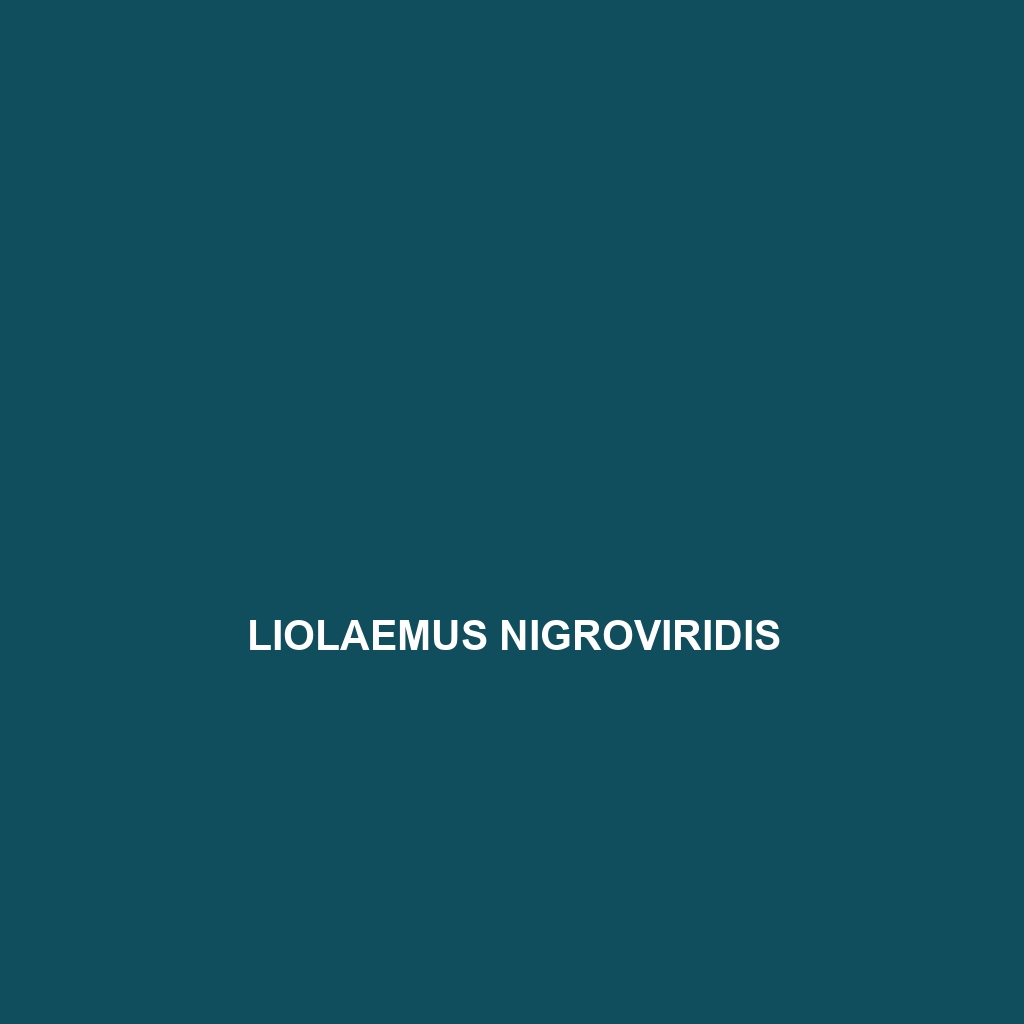Common Name
Liolaemus nigromaculatus
Scientific Name
Liolaemus nigromaculatus
Habitat
The Liolaemus nigromaculatus, commonly known as the black-spotted lizard, is primarily found in the temperate regions of South America, particularly in Chile and Argentina. This species thrives in diverse habitats ranging from rugged mountain slopes to arid grasslands. The climatic conditions where Liolaemus nigromaculatus resides typically include cool temperatures and seasonal variations, providing a unique set of environmental conditions that influence its behavior and adaptation strategies. The lizard often makes its home in rocky crevices, which offer shelter from predators and harsh weather. These habitats are characterized by a mix of xerophytic vegetation and sparse forests, providing both a source of food and protection.
Physical Characteristics
Liolaemus nigromaculatus is a medium-sized lizard, reaching lengths of up to 15 cm (approximately 6 inches). Its most distinguishing feature is its striking coloration; the lizard possesses a dark brown or gray body adorned with distinctive black spots, giving it an unparalleled camouflage against rocky terrains. The limbs are robust, and the tail is relatively long, aiding in balance and agility. Typically, males display brighter colors and larger sizes compared to the females, which can be particularly useful during the mating season. The lizard’s skin is covered in small, smooth scales, contributing to its streamlined shape that allows it to navigate through its habitat swiftly.
Behavior
Behaviorally, Liolaemus nigromaculatus exhibits a range of intriguing characteristics. These lizards are primarily diurnal, being most active during the day when they can bask in the sun and hunt for food. Their social interactions are often dictated by territoriality, especially among males, which can lead to displays of dominance or aggression. During the mating season, intricate courtship rituals are observed, characterized by vibrant displays of color and posturing to attract females. While Liolaemus nigromaculatus does not migrate, it demonstrates a fascinating adaptation to environmental changes by altering its basking and hunting habits seasonally.
Diet
Liolaemus nigromaculatus is primarily insectivorous, feeding mainly on various insects such as ants, beetles, and grasshoppers. Occasionally, they exhibit omnivorous tendencies, consuming small plant matter or fruit when insect populations are low. Their foraging behavior is methodical; they often hunt by sitting motionless and waiting for their prey to approach within striking distance. This dietary flexibility allows them to thrive in fluctuating ecological conditions, making them efficient predators within their habitats.
Reproduction
The reproductive cycle of Liolaemus nigromaculatus is fascinating. Mating typically occurs during the warmer months, from late spring to early summer. After a gestation period ranging from 60 to 90 days, females lay a clutch of 4 to 12 eggs in sheltered areas, ensuring protection from predators. Offspring are left to fend for themselves upon hatching, but the survival strategies they employ are remarkable. The young lizards are born with a set of instincts that enable them to quickly find food and avoid predation, ensuring the continuation of their lineage.
Conservation Status
The conservation status of Liolaemus nigromaculatus is currently classified as ‘Least Concern’ by the International Union for Conservation of Nature (IUCN). However, it faces threats from habitat loss due to urbanization and agricultural expansion. Conservation efforts are crucial to monitor populations and protect their natural habitats. Local initiatives focused on habitat preservation are vital for ensuring the long-term survival of this species in the wild.
Interesting Facts
One of the most remarkable aspects of Liolaemus nigromaculatus is its ability to survive in extreme temperatures. This versatility allows them to remain active in cooler conditions, unlike many other lizard species. Furthermore, their unique camouflage not only defends them from predators but also plays a role in their hunting strategy—blending into their rocky surroundings to ambush prey more effectively. Observations also suggest that these lizards can exhibit fluctuating color patterns depending on their mood and health, adding to their intriguing behavior.
Role in Ecosystem
Liolaemus nigromaculatus plays a critical role in its ecosystem as both predator and prey. As an insectivorous species, it helps regulate insect populations, serving as a natural form of pest control within its habitat. Additionally, these lizards are an essential food source for various predators, including birds of prey and larger reptiles. By maintaining the balance within their ecological niche, Liolaemus nigromaculatus contributes to the overall health of their ecosystem, highlighting their importance in biodiversity and conservation efforts.

